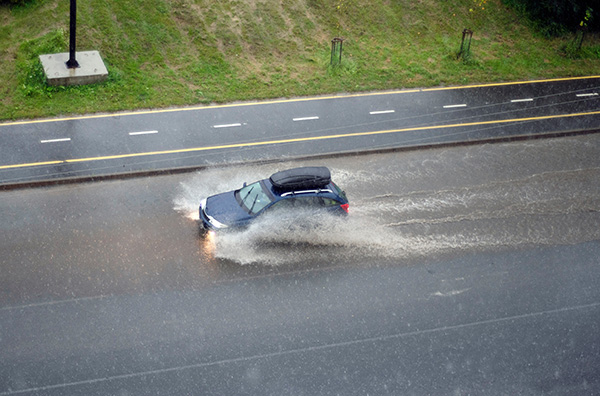
Spring rainstorms can bring much-needed relief from the heat, but they also create dangerous driving conditions. Wet roads increase the risk of hydroplaning, where your tires lose contact with the road and slide uncontrollably. Even experienced drivers can struggle to regain control when this happens. Understanding how to prevent hydroplaning and what to do if it occurs can help you stay safe on the road during heavy spring rains.
What is Hydroplaning and Why It Happens
Hydroplaning occurs when a layer of water builds up between the tires and the road, reducing traction and making it difficult to steer or brake. It usually happens when driving too fast in wet conditions, but other factors can also contribute. Tire tread depth, road conditions, and even the type of vehicle you drive can affect how easily you lose control in rainy weather. The first few minutes of rain are often the most dangerous, as oil and debris mix with water to create an extra slippery surface.
Ways to Prevent Hydroplaning
Keeping your vehicle under control in wet conditions starts with preparation. While you can’t control the weather, you can reduce the risk of hydroplaning by taking a few key precautions.
One of the most effective ways to prevent hydroplaning is ensuring your tires are in good condition. Worn-out tires with shallow tread depth can’t channel water away efficiently, making them more prone to losing grip.
Checking tire tread regularly and replacing them when necessary improves traction on wet roads. Keeping your tires properly inflated also plays a role in preventing hydroplaning, as underinflated tires have less effective contact with the road.
Reducing speed in wet conditions is another simple yet crucial way to stay safe. Water reduces friction between your tires and the road, so the faster you drive, the easier it is to lose control. Slowing down gives your tires more time to push water away and maintain traction. If possible, avoid using cruise control in heavy rain, as this feature can make it harder to react quickly when conditions change.
Avoiding standing water and puddles can significantly reduce the chance of hydroplaning. Large puddles may look harmless, but they can hide deeper water levels that make your tires lose contact with the road. Driving in the tire tracks left by other vehicles can help, as the road is slightly drier in those areas. Sticking to well-maintained roads and avoiding areas prone to flooding also lowers the risk of skidding.
What to Do If Your Car Starts Hydroplaning
Even with all the right precautions, hydroplaning can still happen. If your car begins to skid on a wet road, the most important thing is not to panic. Sudden movements or harsh braking can make the situation worse.
Instead of slamming on the brakes, ease off the accelerator to allow your tires to regain traction. Turning the steering wheel too quickly can cause a spin, so keeping gentle, steady control is key. If possible, steer in the direction you want to go without making sharp movements.
If your car has anti-lock brakes (ABS), apply gentle pressure to the brake pedal to slow down safely. If your vehicle does not have ABS, try to pump the brakes lightly instead of pressing down hard. The goal is to reduce speed gradually without causing further loss of control.
Once your tires regain traction, continue driving carefully at a reduced speed. Hydroplaning is often a warning sign that road conditions are worsening, so staying alert and adjusting your driving accordingly can prevent further issues.
Get Your Car Ready for Spring Rainstorms
Routine vehicle maintenance is essential for handling wet weather safely. Worn-out tires, old windshield wipers, and low brake fluid levels can all make hydroplaning more likely. Replacing windshield wipers regularly ensures clear visibility during storms while checking brakes and suspension components can improve overall handling. Keeping an eye on tire tread, fluid levels, and brake performance will make a noticeable difference in wet conditions.
Spring rainstorms are unpredictable—make sure your car is ready! Visit JFM Motors in West Palm Beach, FL, for a tire check, brake inspection, and safety maintenance. Call us today!